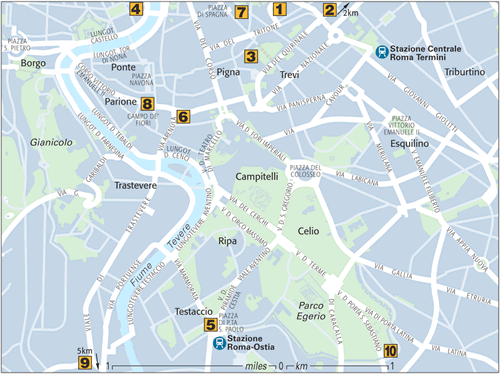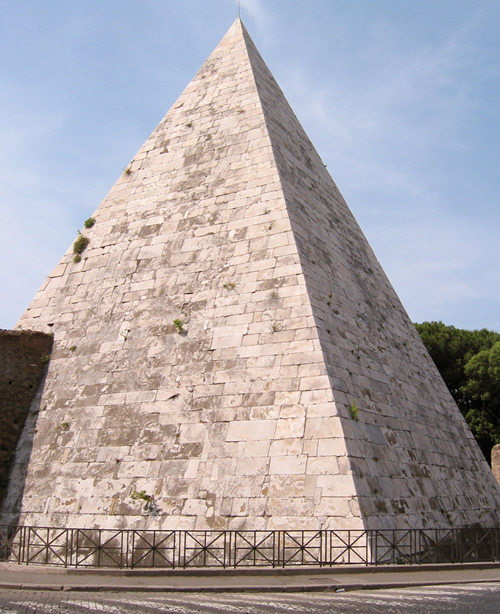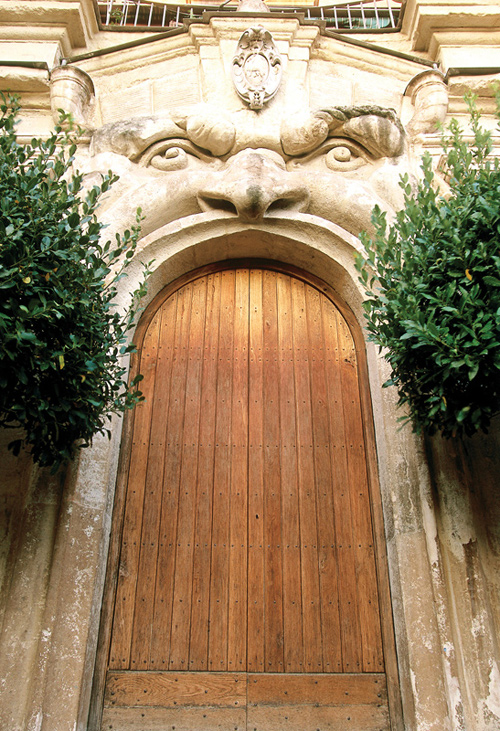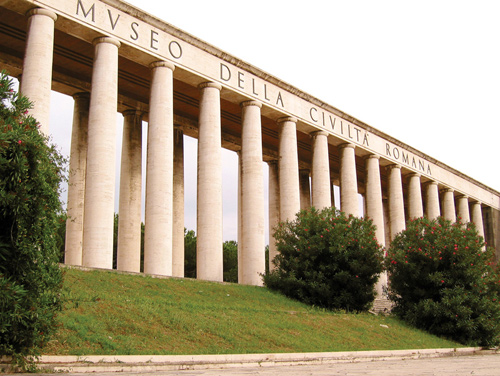|

Capuchin Crypt If
you like a good haunted house, this is your first stop. The bones of
thousands of deceased monks have been used to decorate every conceivable
surface in the most ghoulish designs. Those corpses that weren’t taken
to bits have been hung on walls, decked out in cowled robes . Museo della Casina delle Civette One
of the restored buildings in Villa Torlonia, Mussolini’s abode as prime
minister, this Art Nouveau cottage displays ceramic and stained-glass
decorations, including owl motifs, which gives it its name, “The Little
House of the Owls.” The setting is now a public park. Museo Nazionale delle Paste Alimentari The
National Museum of Pasta proudly proves that pasta was invented in
Italy in the 12th century. Discover how pasta is made from durum wheat,
which processes are used to create pastasciutta (dried pasta), and how eating it al dente (chewy) makes it easier to digest. Museo delle Anime del Purgatorio The
Gothic Sacro Cuore del Suffragio church is host to a truly spooky
display. A glass case preserves various types of physical “evidence”
(mostly handprints
burned on to surfaces) of visitations from dead souls, waiting in
Purgatory to move up into Heaven. Pyramid of Caius Cestius Following
the Egyptian fashion, many ancient Romans used to build their tombs as
pyramids, but this is the only survivor. It was made to form part of the
defensive wall around the city .

Cat Sanctuary at Largo Argentina Dr
Silvia Viviani is the guiding genius of this loving undertaking, but
what makes it work is the volunteers’ enthusiasm. Tourists are welcome
to visit the veterinary clinic, and are also encouraged to adopt one of
the cats. The sanctuary has a “no-kill” policy. Palazzo Zuccari Noted
for its door and window frames shaped into screaming mouths of
grotesque ogres, this bit of 16th-century Mannerist fantasia was the
atelier of the painters Taddeo and Federico Zuccari. Via Gregoriana 28 Closed to public

Doorway, Palazzo Zuccari
Museo Barracco This
select collection traces the development of sculptural art in the
ancient world. Assyrian and Egyptian works are highlighted, along with
Etruscan, Roman and paleo-Christian art. Its original Greek sculpture is
second only to the Vatican’s. Museo della Civiltà Romana A
Fascist Art Deco Temple of Karnak is home to this fascinating museum.
The most striking exhibit is a 1:250 scale model of what Rome looked
like in the 4th century. Other items include models of ancient furniture
and musical instruments.

Museo delle Mura Porta San Sebastiano is the most impressive gate surviving in the Aurelian Wall .
It now houses a museum containing prints and models illustrating the
wall’s history. Take a short walk along the restored parapets, which
provide great views, especially along the Via Appia.
|